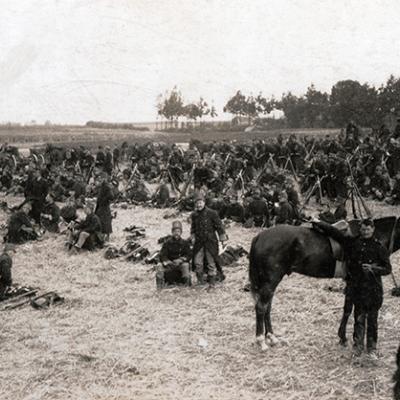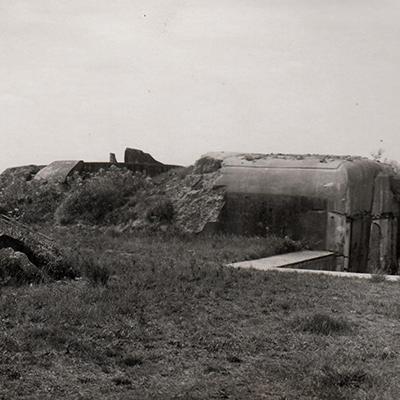Antwerp
On 16 August the last fortress of the Liège Fortified Position fell. The field army withdrew fighting to Antwerp. The fortified city of Antwerp or Antwerp Fortified Position had been allotted the task of operational base and ‘national redoubt’ or refuge for the field army and political institutions. In Antwerp France and Great Britain, being guarantors of the Belgian neutrality, should come to our aid.
Meanwhile the German forces advanced further through Northern Belgium and pivoted south according to the Schlieffen Plan.
On 25 August and on 9 September the Belgian army conducted breakouts from the Antwerp fortress on the flank of the German advancing armies.

The vital lines of communication between the islands and the continent had to be broken, but the German fleet was not up to this task. Antwerp and the other ports on the North Sea now had a direct strategic importance. In order to deny the British the potential use of the port of Antwerp and to end the annoying breakouts on their flank the Germans decided to besiege and to capture the Antwerp fortress.
Antwerp would be attacked when the heavy siege artillery was done with the fortresses around Maubeuge. The German 3rd Reserve Corps under the command of General von Beseler, which was guarding Antwerp, was charged with this mission. The Corps was reinforced and now counted five Infantry Divisions with 120 pieces of siege artillery.
In 1914 the official name of the Antwerp fortress was “Position fortifiée d'Anvers” (Antwerp Fortified Position) or “PFA”. It consisted of an inner and an outer defensive belt made up of fortresses and sconces. It had both older and newer buildings, built and improved in the period of 1859 until 1914. The fortresses and sconces were completely manned after the mobilization.
On 28 September the siege of the Antwerp Fortified Position began with the shelling of the fortresses by heavy 30.5 cm and 42cm calibre artillery, especially designed for this purpose.
The fortresses and sconces of the outer defensive belt were laid in ruins one by one by the German siege artillery which was mounted out of range of the Belgian artillery. By early October the fortresses of Walem, Sint-Katelijne-Waver, Koningshooikt, Lier, Kessel and a number of sconces had fallen into German hands.
On 5 October the Germans managed to cross the Nete river south of Lier and emplace a bridgehead. The next day they brought guns to the bridgehead to open direct fire on the 5th Army Division. On 6 October the fortress of Broechem, north of Lier and of the Kleine Nete river, was also eliminated. The main position of resistance was breached.
In the afternoon the military and civilian authorities met in the city. They decided unanimously to surrender the outer defensive belt. On that same night the majority of the field army crossed to the left bank of the Scheldt river. First the fortresses of Merksem, Schoten, Kapellen, Brasschaat and Lillo were blown up. The huge supplies were either removed or destroyed. In the night of 6 to 7 October the field army crossed the Scheldt river by a pontoon bridge at Rupelmonde, by a floating bridge at Hemiksem, and by a pontoon bridge at Burcht respectively. King Albert I left for Sint-Niklaas and went to the General Headquarters.
On 6 October the German troops mounted artillery pieces in the bridgehead within shooting range of the city centre. On Wednesday 7 October they demanded the surrender of the city and threatened to bomb Antwerp. The military and civilian authorities of the city and fortress refused, and at 11 p.m. the bombardment of the city began. More than 4,000 shells and 140 Zeppelin bombs were dropped on the city.
The German advance through Northern Belgium had already put many people to flight. During the siege of the Antwerp Fortified Position and especially after the bombardment of the city many people fled.
The “Antwerp Fortified Position” fell on 10 October 1914. The field army, together with King Albert I, started its retreat to the Yser plain.






